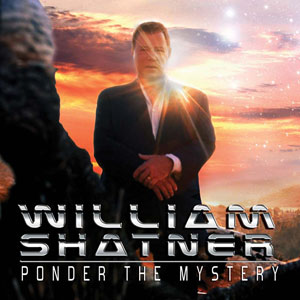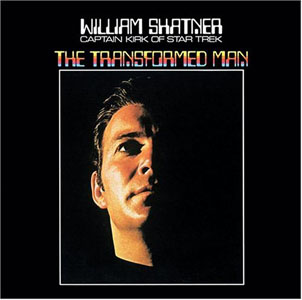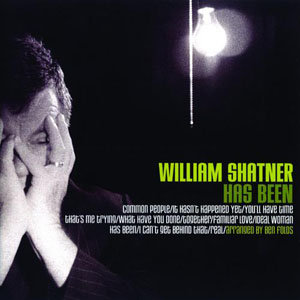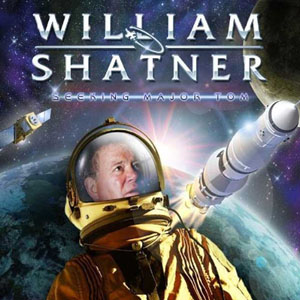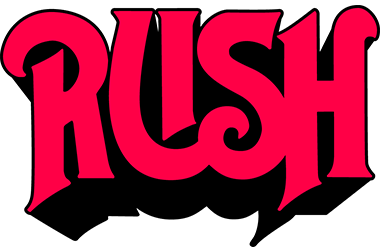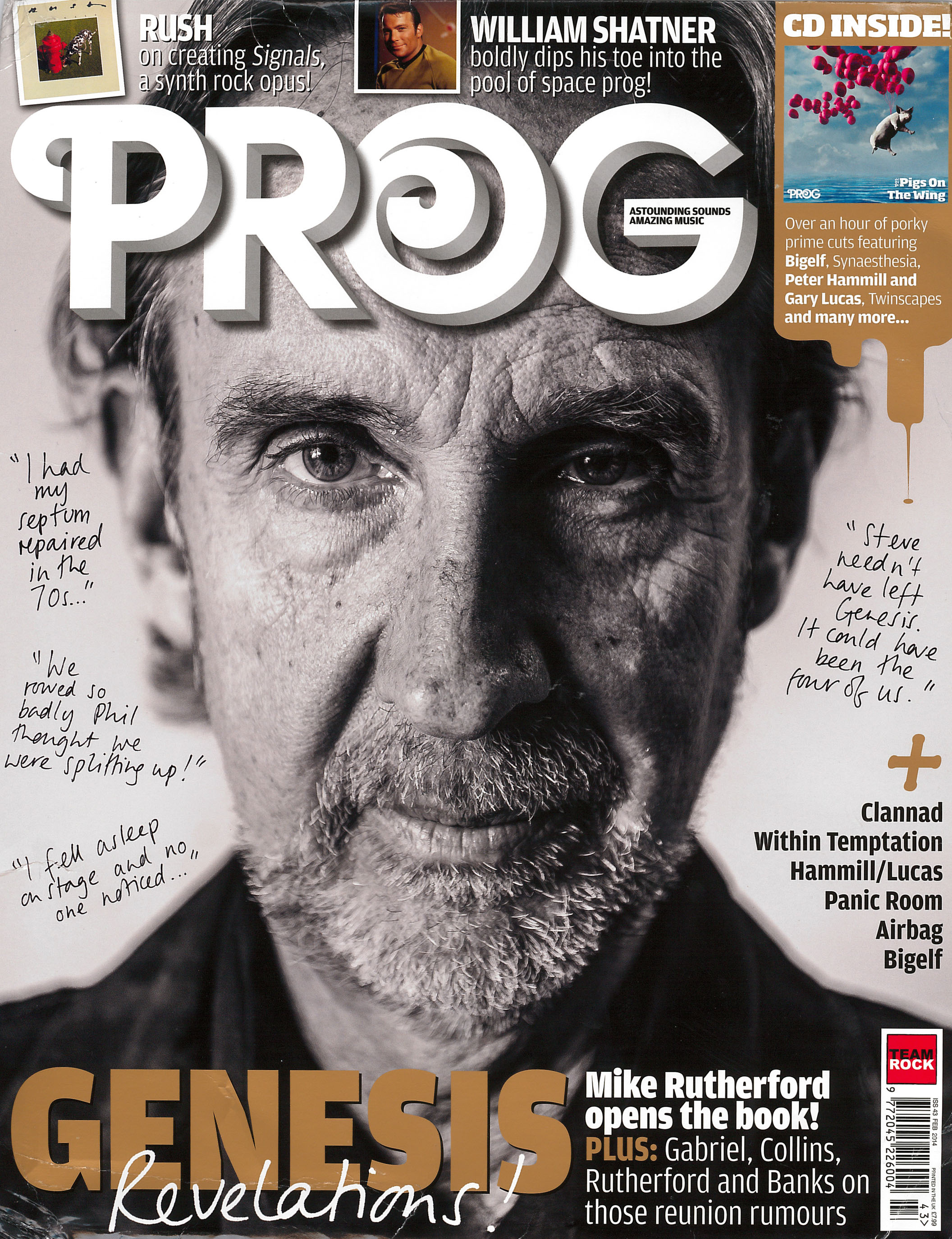
|
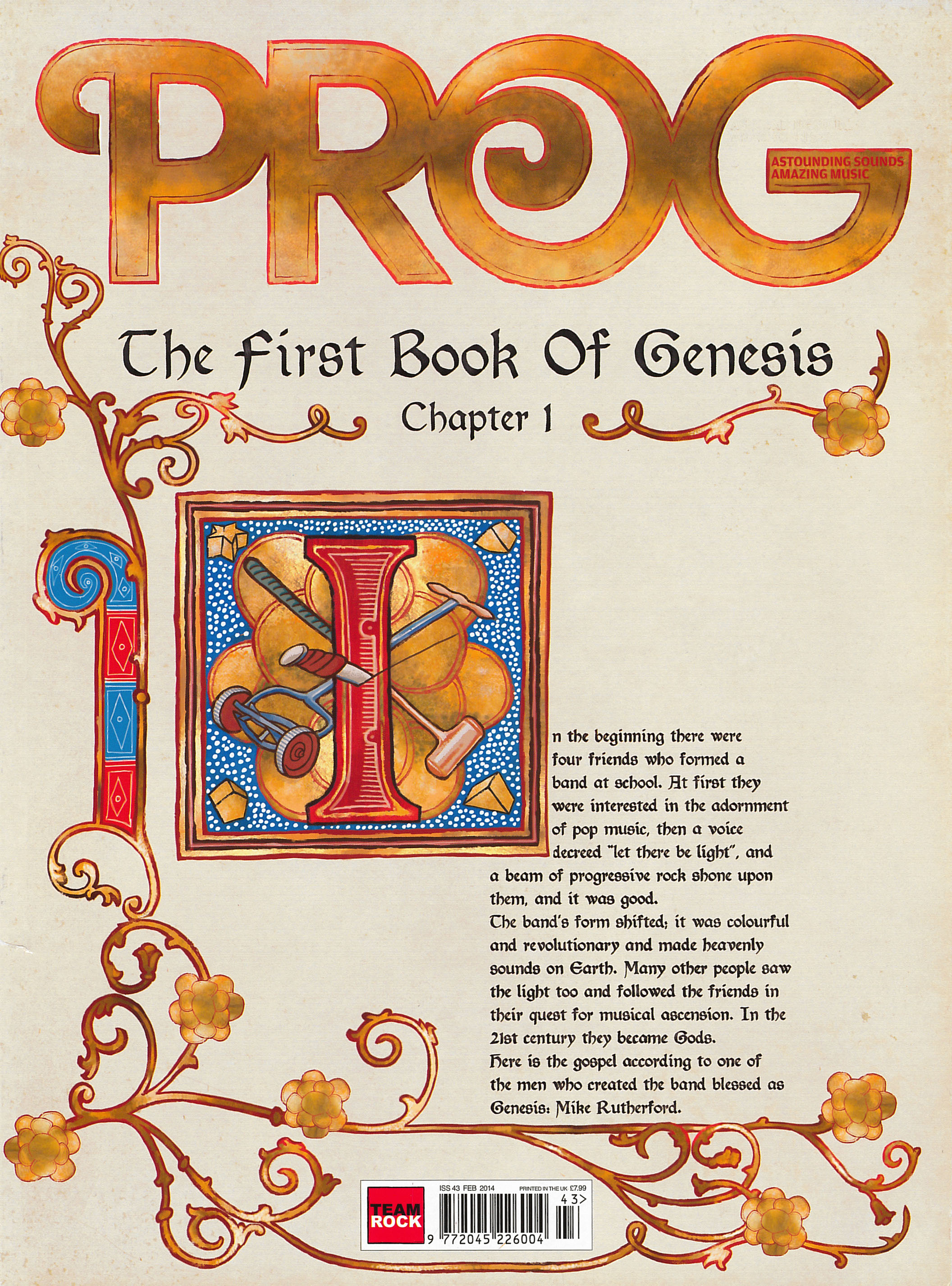
| Saved Prog: Signals / It's Prog, Jim... PROG Magazine February 2014, Issue #43 Signals Article By Dave Ling William Shatner Article by Grant Moon |
Rush on creating Signals, a synth rock opus!
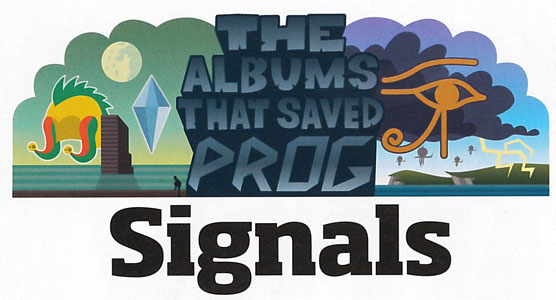
Click Any Image to Enlarge
With thanks to Eric Hansen for assistance with the transcription
After the massive success of Moving Pictures, Rush had the world at their feet. Yet rather than record a chart-friendly follow-up, the ever-contrary Canadians instead embraced the emergence of electronic instruments to deliver an album that would divide the fans - and the band themselves.
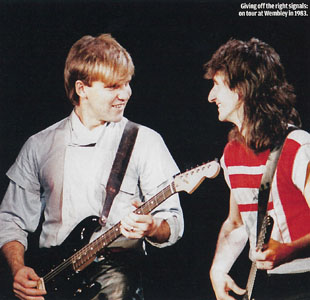
It's the spring of 1982 and Rush are facing arguably their biggest challenge yet. Thanks to a more radio-friendly format and the continued integration of keyboard technology, the previous year's Moving Pictures was by far the biggest seller of the Canadian trio's eight-album career. Now it's time for them to do it again, but for minds as inventive as those of bassist/vocalist Geddy Lee, guitarist Alex Lifeson and drummer Neil Peart, the notion of self-replication is a complete non-starter.
"After the success of Moving Pictures we could've done anything we liked," observes Lifeson, "and in Rush's world, that usually means it's time to change."
The band dived headlong into a world swamped in keyboards and the very latest in electronic instrumentation. The ensuing sessions were to prove troublesome and their results not only divided their fanbase, but they also terminated a long and fruitful relationship with Terry Brown, the co-producer of all their LPs since 1975's Fly By Night. Potentially more damaging still, the album concerned (later titled Signals) was the first of a sequence to alienate Alex Lifeson, whose contribution dwindled - the guitar certainly became less of a lead instrument - as layer upon layer of sequencers were daubed upon the trio's aural canvas.
Today Lifeson is in London where, 24 hours from now, he will be presented with a Spirit Of Prog gong by Rick Wakeman on behalf of his bandmates at the Classic Rock Awards. Rush still make records and tour, and as every reader of this magazine knows, have flourished in the new millennium. More than three decades later, Lifeson can look back at the events of 1982 with some detachment. This suggests that he's either an extremely fine actor, or that the passing of so many years has softened the recollection of what must have been an extremely frustrating time for him.
"I agree with the consensus that Signals is among our most important and interesting records," muses the guitarist, scrutinising the vinyl sleeve that Prog has brought along in the hope of triggering an extra memory or two. "But," he adds, almost lost in a moment of quiet contemplation, "for obvious reasons I have mixed memories of that record."
Rush actually began the preparation of material for Signals during their Moving Pictures tour. "Geddy and I had some of Subdivisions, and we'd worked on Chemistry over at his place," relates Lifeson. "I had a little amp in the shape of a transistor radio with a tiny speaker which we put into a guitar case - that was our rather primitive recording technique."
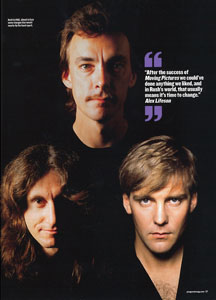
The band headed to Lake Windermere in the north of Ontario to fine-tune their ideas. Lifeson remembers with a shiver: "It was a very cold, snowy winter. The snow was piled up everywhere and we ended up staying in this deserted summer lodge."
When Prog suggests that it all sounds a little like Stanley Kubrick's iconic celluloid edition of the Stephen King novel The Shining, Lifeson beams in agreement. "That's exactly how it was. There was one room that we converted into a studio/rehearsal area, and we began working on the material we'd brought with us."
However, in contrast to The Shining, none of the group encountered any ghosts, lost the plot or began wielding axes and whacking them into doors. "I remember it as a very enjoyable time," smiles Alex, before volunteering: "It was only when we began recording the songs that things became a little more difficult. That was the start of our wanderlust. It dawned on us that we wanted to try new ideas; maybe work with different people. It was an unsettling time."
In April 1982, Rush, Brown and engineer Paul Northfield decamped to Le Studio at Morin-Heights for a four-month stay. John Wetton once told this writer that Asia suffered a near-fatal case of cabin fever while recording their Alpha album there the following year - the place is getting on for 60 miles outside Montreal, after all - but Rush relished the facility's remoteness.
"We're Canadians - we're not afraid of snow!" Lifeson exclaims. "We loved being at Morin-Heights. Twice or three times a week we'd drive to a small town down the road and have dinner together. We'd put up a net and play volleyball after the sessions, and of course there was lots and lots of lubrication."
From the snappier approach of "New World Man", which became their biggest US hit single, to the more audacious "The Weapon (Part II Of Fear)", the material the band had accrued was rich in variety and quality.
"Subdivisions was such a strong song - a real marker for us," Lifeson says. "We brought back 'Analog Kid' on our last tour and the mix of guitar and keyboards makes it great fun to play live. I love the chordal progression of 'Chemistry', but with retrospect it's a little disjointed, and getting 'Digital Man' to sound the way it did was like pulling teeth."
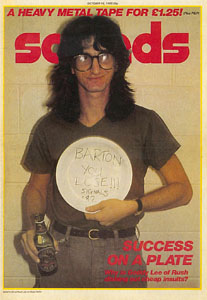
Perhaps surprisingly, Geddy Lee dismissed Countdown as "a pretty poor song" in 1992. "I love that one, actually," responds Lifeson, "but I know what he's saying: we could've spent more time on it."
Lee later expressed the viewpoint that Signals was "a difficult album to make, and it spelled the end of our relationship with Terry Brown", a statement Lifeson echoes. "With the possible exception of Moving Pictures, which almost fell into place, they're all difficult to make," he laughs, "but if I told you the creation of Signals was completely smooth then I would be lying."
But the straw that broke the camel's back was the reggae-ish section of Digital Man, which, so the story goes, Terry Brown hated so much that he at first refused to record it. "You know what? I don't remember that being the case," responds Lifeson diplomatically. "But Terry was definitely afraid that we were moving away from being a rock band, taking too much influence from other bands like The Police. And he really wasn't keen on Neil's use of electronic drums."
Rush, for their part, were keen to experiment with all of the new hardware that was becoming available. "All three of us we were unanimous in that desire," clarifies Lifeson. "That's what Rush is - we're always looking to try something different, or to head in a new direction."
The problem with Signals, from Lifeson's viewpoint at least, lay not with the songs but in an irregular production. "In a couple of key places there was too much emphasis placed on the keyboards," he explains. "The mix of Subdivisions has always been a disappointment for me. I recall leaning over to push up the faders [to increase the guitar levels in the mix] and Terry would smile and push them back down again."
Lifeson tolerated this situation for a while, 'taking one for the team' in today's parlance - though Lee later related how the normally placid Lifeson returned to the studio with fresh perspective following a few days away, storming into the control room with the statement: "There's not enough guitar on this record for Chrissakes!"
"The language was probably more colourful than that," guffaws Lifeson at the memory. "But look, a band operates on consensus. Everybody else felt we were going in the right direction. To my way of thinking there was an imbalance, but I have no regrets.
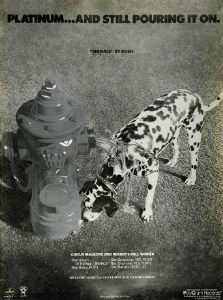
"The song 'Digital Man', for instance...there's no problem with that. But we had so much trouble getting the feel right. The direction was lacking, and that's when you need a strong producer."
Geddy Lee once observed: "We were bored of doing things the same old way. We should probably have changed producers instead of changing the internal balance of the band."
"That's what it all boils down to," agrees Lifeson now. "We were not getting the kind of direction and guidance that we needed."
The split with Brown was amicable (indeed, the credits of the band's next, self-produced album, Grace Under Pressure, included the tribute: "Et toujours notre bon vieil ami - Broon"), but Lifeson admits it was a wrench.
"For sure," he nods enthusiastically. "Terry had been a big part of this band. Besides the actual production, he was there for all of the writing sessions and the arrangements, so his exit left a big hole. Deep down inside, though, it was time."
Released in September 1982, Signals topped the charts and went platinum in the band's homeland, though sales didn't match the stellar performance of Moving Pictures. Its more user-friendly contents served to polarise the opinions of diehard Rush fans. "Some people love it, others hate it," nods Lifeson in agreement. "That's inevitable."
Lifeson is now able to sit and listen to Signals from start to finish without feeling pangs of disappointment. Would the same statement have applied when the album was fresh from the printing press?
"It's a good question," he smiles, "and there were times when I might've felt [reservations] at certain points back then, but now I'm very proud of it."
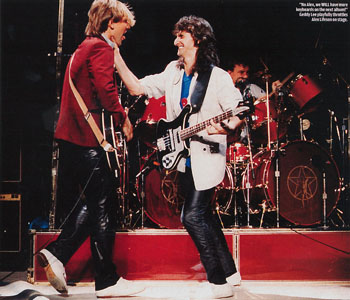
As "New World Man" became a surprise hit, the band's facelift rubbed off on other groups, many of whom suddenly began adding keyboards to their sound. Formed three years later, the keys-dominated Dream Theater have never been shy of admitting the influence of Rush. The prominence of keyboards only escalated over Rush's next few records as their productions became ever more slick and pristine, until a Rupert Hine-helmed return to basics with Presto in 1989. It could be claimed that Signals and the records Rush made with Peter Collins (1985's Power Windows, and Hold Your Fire in '87) helped to pioneer the way that progressive hard rock would develop over the next decade.
"That's flattering to hear but we've always tried to move on quickly to the next thing." beams Lifeson, adding with his usual tact: "When another band follows in your footsteps, it's always an incredible compliment." As stated, material from Signals and its keyboard-cloaked successors figured highly in Rush's 2013 setlist, as documented on the Clockwork Angels Tour DVD. Acknowledging the fact that this decision wasn't universally popular among some of their fans, the guitarist can offer no explanation for the fact. "It just seemed like a good idea at the time," he smirks. "We're contrary like that."
Talking of which, expect Rush to adopt a low profile in 2014 - despite the fact it marks the 40th anniversary of their existence as a band.
"So we'll celebrate the 41st anniversary in 2015 instead," Lifeson responds casually. "For the last dozen years we've really burned the candle at both ends. It's hard to play for three hours, travel and do 80 shows, plus interviews and stuff. We're really going to try not to work for the entire year in 2014. We need and deserve a rest."
"It was Rush adapting to 80s pop culture yet never conforming to its blueprints."
Haken vocalist Ross Jennings on the synth-driven wonder of Signals
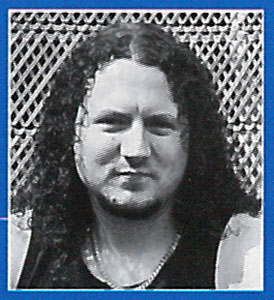
"It was another lyrical masterpiece that introduced some of my favourite Rush tracks. Signals was a brave directional shift for the band that caused many to snarl, but with shorter, catchier and synth-driven songs, it was the sound of Rush adapting to 80s pop culture, yet never conforming to its blueprints. To me it certainly felt like prog's answer, if not a tribute, to the wave of pop and punk acts to emerge and become fashionable in the 80s.
"Rush never rest on their prog laurels, always challenging both avid fans and new listeners by integrating unexpected offbeat ska-influenced rhythms and adding synth riffs to their sound palette - likely due to the success of 'Tom Sawyer' - and taking it to the next logical extreme.
"My favourite moments are the less obvious ones - 'The Weapon', with that Blondie-esque disco intro fade-in, is a captivating blend of lo-fi prog-pop embellished with poetic lyrics and plenty of sonic textures pleasing to the ear. Peart's adventurous percussive phrasing and Lifeson's sustain-drenched guitar solo paint over a steady hypnotic pulse - a perfect marriage. 'Losing It' is another favourite, a beautiful ballad rich in melody and atmosphere and topped by Geddy's glorious vocal.
"As an 80s child. I'm drawn to this era of Rush due to great, accessible songs, a bold production from Terry Brown, and lyrical content that speaks to the anti-conformist teenage geek in all of us!"
"It's Prog, Jim"
...but not quite as we know it! For his fourth musical enterprise, Star Trek legend William Shatner
turned to renowned prog machine Billy Sherwood and boldly went where he's never been before.
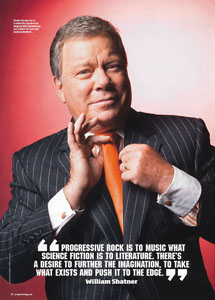
As you'd expect, William Shatner spins a great celebrity yarn. "Every year Tom Hanks has a Shakespeare reading to raise funds for schools. He gets all his friends together, of which I'd like to consider myself one, and we do a reading of one of Shakespeare's plays. The latest one's The Two Gentlemen Of Verona. Paul McCartney is going to sing his songs and I'm going to do Lucy In The Sky With Diamonds with him."
That $1,500-per-seat event did happen - stardate September 25, 2013 - at a sold-out Broad Stage Theater in Santa Monica. Hanks, Macca and Shatner were joined by Val Kilmer and Seinfeld's Jason Alexander among others to raise money for various good causes. With its tempo changes, Mellotron intro and marshmallow skies, Lucy... is a pretty proggy piece of work. Shatner's remarkable take on it was the highlight of The Transformed Man, his debut album released in 1968, as the original Star Trek series was entering its third and final series. "My understanding is Paul found my interpretation 'interesting'," he laughs. "That's the word he used!"
A few things to say about speaking to William Shatner: Yes, he does. From time to time. Speak in. Staccato bursts. Like Captain Kirk. Also, he has a knowing, almost English sense of irony about himself. He's well aware that many people might find him - or at least his musical endeavours - faintly absurd. But yet, he's friendly, articulate and - with his 83rd birthday coming up in March - still in possession of more marbles than many Hollywood stars start out with.
"He's just an amazing, down-to-earth guy and an amazing artist," says former Yes guitarist Billy Sherwood. "He's capable of just going to the Bahamas and retiring, but he wants to continue with his art, and I respect that." Sherwood has collaborated with Shatner on his fourth musical enterprise, Ponder The Mystery. They were introduced by Brian Perera, founder of Sherwood's regular label Cleopatra, which also released Shatner's daffy 2011 covers album Seeking Major Tom. "Brian suggested I meet Billy," says the actor, "and they asked what I'd do. Well, I could take a period of time, there's a guy on a beach who's in despair an hour before sunset. The sun sets, and through the beauty of what he sees he regains his joy of life. They said, 'Uh okay!' They didn't really know what I was talking about, and in a way neither did I. I began to write song lyrics about twilight, sunset and the sounds of the night, and before we knew it we had 15 songs."
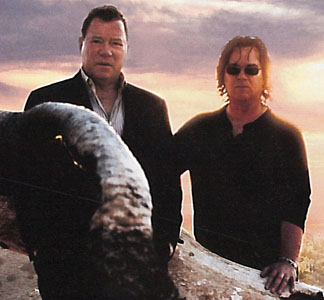
"I thought that's an incredible artistic expression for a man in his position," says Sherwood. "I said, Let's go at this like a serious progressive rock record. Let's try to make an interesting piece of art here, not worry about what people are expecting and just do what we want to do. He was into that and ran with it. I waited for him to give me I lyrics, I got the vibe harmonically-speaking and bounced off of those. He wrote So Am I about his dog dying and equating it to himself and mortality. It was melancholy, so I wrote music with almost a church-like atmosphere."
Though perhaps not for everybody, this concept works well for those inclined to go with it. Shatner's spoken-word existential enquiries are set to Sherwood's highly effective symph-prog rock arrangements, on songs such as Where It's Gone... I Don't Know, I'm Alright, I Think and Where Does Time Go?. Musically and vocally Sherwood ('a bloody genius', according to his co-writer) does the heavy lifting. His layered harmonies and rock tones are an astringent counterpoint to the Star Trek veteran's distinctive, what's-it-all-about recitative.
Musically, jazz is Shatner's first love, and he admits that before hooking up with Sherwood he'd never been a big progressive rock fan. "But when I came up with the idea I went back and listened to all these great bands, like Pink Floyd, to get the cohesiveness of the concept. I tell ya, I'm getting myself into deep water here! I seem to have lurched into this area by osmosis.
"I conceived the idea that progressive rock is to music what science fiction is to literature. There is in science fiction a desire to further the imagination, to take what exists and go further to explore the boundaries, the horizons. In progressive rock you push the music to the edge and discover new ways of doing things. Maybe this album is a new way of doing things. I don't know, but in my experience this is new. It's tantalising you with new ideas of how music and the spoken word - the music of language itself - can combine."
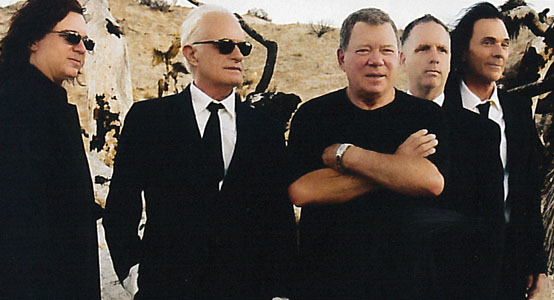
The oddest, most avant-garde tune on the album must be Rhythm Of The Night. Hawkwind's Nik Turner adds sax to an evocative, glossy slab of AOR-inflected prog that's intriguing and fun, with Shatner's love of wordplay at the fore. "I had the idea for the line 'The cricket is the ticket to the rhythm of the night/The cadence of the hawk is obligato to the dusk. Billy took the rhythm of my words and put them to music."
"I wanted that in an odd meter," adds Sherwood, "to have the rhythms move around, so I played the drums crazy on that one. It's a cool tune. My main challenge was to make sure when I played something he was digging it. He was really accepting of the compositions, and it became very natural, many of the projects I do we start getting in a flow and they become easier over time."
Through his Prog Collective and numerous tribute albums, Sherwood has a proven track record for eliciting great performances from a galaxy of prog stars. Ponder The Mystery is energised by guests including Steve Vai, Edgar Winter, The Doors' Robbie Krieger, Foreigner's Mick Jones and Tangerine Dream's Edgar Froese. When Al Di Meola heard Shatner was doing a new album, he called him up directly and asked to be a part of it. Shatner had never heard of him, but Sherwood leapt on the chance to get him involved. Rick Wakeman has been a Sherwood 'friend and ally' for years so he's added some nimble parts. The album's notable for featuring some of the last recorded work by the late keyboard great George Duke, whose overdubs were sent to Sherwood's studio just days before he died.
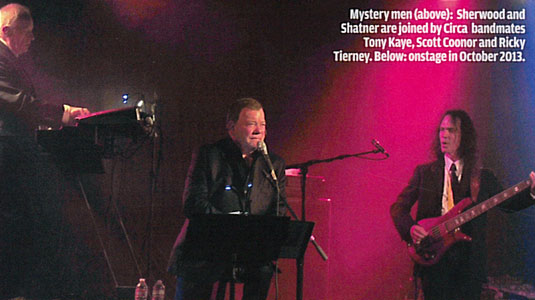
The theme of mortality is a major aspect of the work, and the gravity of the concept is something that attracted Sherwood to the project in the first place. Produced by Ben Folds, Shatner's strong second album Has Been came out in 2004, and had some intense moments, such as the hauntingly sparse What Have You Done, inspired by the tragic death of his third wife, Nerine Kidd-Shatner. "That's what I tuned into," says Sherwood. "It was very heavy, it was real. I knew there'd be people who would get Ponder The Mystery, and others who were waiting to hear Lucy In The Sky With Diamonds, and there's nothing we could do about that. So I'd roll the dice to get people thinking rather than waiting for the joke. I'm very very proud of what we've come up with."
In October they launched the album with three small club dates in LA, with Shatner backed by Sherwood and Circa, his regular band with Tony Kaye. "I've never done show like that," says Sherwood. "I'm used to music in its traditional form, but this was more like prog rock theater. I'm singing, doing my thing, and Bill's reading and doing his, and the mixture created a unique experience. One night he told a story about how musicians, if something's wrong, give each other a look, and he'd realised the battery pack for his in-ear monitors wasn't even on. I said to him afterwards, 'Dude you're supposed to tell me these things so I can come over and fix it!' And in rehearsal we musicians might be getting a little tense, and he'd be just sitting there, smiling through it all. I'd tell him, 'You need to screw something up so I can yell at you a little bit!' It was all so funny, and so surreal."
And if Sherwood's main priority was to keep the Captain happy, then he certainly achieved that. "I've never had a more creative, enjoyable and spectacular time with anyone in any place," says Shatner of his co-writer. "There are such unbelievable players on the album. I'd worried there'd be a sameness to the songs, but they've lent their uniqueness to them. There are songs on here that move me to tears no matter how often I hear them. It's been wonderful."
Ponder The Mystery is out now on Cleopatra, see williamshatner.com.
